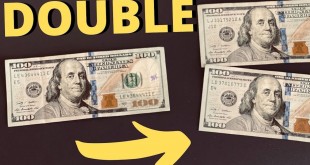When it comes to saving for retirement, we are facing all kinds of risks, from skyrocketing healthcare costs to running out of money because we’re living longer than we expected.
Now another kind of risk is starting to get attention as concerns mount that the second longest-running bull market in history may soon end. It’s called “sequence of returns” risk.
Sequence of returns is all about timing. It means if your investments take a big hit as you are nearing retirement or in the early years of retirement, your losses can be much more devastating than if they had occurred earlier in your life. That’s because as you are entering retirement, you have much less time to make up for losses.
Related: What’s Your Safe Money Plan for Retirement?
People who have a big portion of their assets in stocks and mutual funds stand to lose the most if the market tanks as they are preparing to or starting to withdraw money from their accounts. This is why many financial advisors recommend people take steps, such as diversifying their portfolios and getting out of the stock market, to limit their risk late in the game.
There is no way to accurately predict when the next market crash will occur or what markets will be doing when you’re ready to retire. However, we do know that the impact of a market decline in the early years of retirement is even worse than in later years. If your investments lose significant value as you are preparing to tap them, you may have to work longer than you had planned or accept a drastically lowered standard of living in retirement — or both.
Some people think they can beat sequence of returns risk by using the widely recommended “4 percent rule.” This advises retirees to withdraw no more than 4 percent of their retirement accounts (adjusted for inflation) each year. So if you have $100,000 in your retirement accounts, you can safely pull out $4,000 a year. If you have $500,000, you can withdraw $20,000 a year, and if you have $1 million in your account, you can take out $40,000 a year.
Let those numbers sink in for a moment …
Then realize that if you have deferred taxes by investing in a 401(k) or IRA, you’ll still have to pay taxes on those sums when it comes time to withdraw money from your retirement accounts. But it gets worse. With people living longer than ever, more recent studies recommend that retirees withdraw only 2.8 percent annually to make their money last.
Related: 10 Pieces of Financial Advice I Wish I Knew in My 20s
What are the chances the market will crash by 50 percent or more as you are nearing or starting retirement? No one knows for sure, but we do know it has already happened twice since 2000. So if your million-dollar 401(k) suddenly becomes $500,000, you’ll be able to withdraw only $20,000 per year (or $14K, if you opt for the more conservative 2.8 percent).
What do I do?
There really is only one solution to this dilemma. Take full responsibility for your own financial security. Don’t rely on the conventional retirement planning wisdom — what everyone assumes to be true. If conventional wisdom were correct, then why would surveys show that the majority of Americans have to worry about lowering their lifestyle in retirement?
The solution is to understand the difference between saving and investing. To save means to place money you can’t afford to lose in a vehicle that is safe and has guaranteed growth. You are certain your money will be there when you need it.
In contrast, to invest means to place money in a financial vehicle or an asset that has a certain amount of risk. You hope to make a gain, but it’s not guaranteed. In fact, you might even lose your original investment. The only money you should invest is money you can afford to lose or money you’re able to let languish in the market for at least 20 years, if necessary, until it recovers.
Unfortunately, over the past 30 years or so, we’ve been seduced by Wall Street into believing we must risk our money in order to achieve growth of any significance.
Related: Why Saving for Retirement Is a Waste of Time and Money
Don’t fall for it!
After investigating more than 450 different financial products and vehicles, I’ve concluded you can bypass Wall Street to grow a sizable nest-egg.
What if you didn’t have to risk everything in order to grow a cozy nest egg for retirement? Instead of sleepless nights worrying about the next market crash, you could feel empowered. It’s amazing how motivating saving can be when you don’t have to worry about losing your hard-earned money in another economic disaster.
Source link
 Best Stock Hints Latest Tips To Buy & Invest Best Stocks Today
Best Stock Hints Latest Tips To Buy & Invest Best Stocks Today




